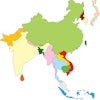
Starting with the breakup of the Soviet Union and a trade deal stuck between Mikhail Gorbachev and George H.W. Bush, exports have become an increasingly prominent marketing outlet for the U.S. broiler industry. Beyond Russia, expanded trade with China and Mexico bolstered the industry’s export program even further.
At the program’s peak, roughly one in every five pounds of broiler meat produced in the U.S. was sent to a foreign destination. Strained relations with Russia and a series of other obstacles have resulted in less favorable export trends over the past decade.
Landmark shift in 2014-15
Russia had already been moving in a more protectionist direction for years, but growing tensions around Crimea led to trade flows between the U.S. and Russia being fully severed in 2014. That was soon followed by the most devastating outbreak of highly pathogenic avian influenza (HPAI) in U.S. history.
Mounting trade restrictions further slowed product movement out of the country, with total broiler meat shipments plunging to just 6.32 billion pounds in 2015 from 7.30 billion pounds the previous year. The export share of domestic broiler production, which had peaked at 19.6 percent on an annual basis in 2012, dropped to just 15.8 percent in 2015.
Underwhelming export recovery
As the HPAI threat of 2015 faded, trade restrictions were gradually lifted, fueling an export recovery, but this marketing component has carried a noticeably tamer profile over the past decade compared to the pre-2014 trajectory.
Annual shipments eventually recovered enough to post a new all-time high of 7.37 billion pounds in 2020. That eclipsed the previous record of 7.35 billion pounds from 2013, but with domestic broiler production also expanding significantly during that stretch, the export share of domestic output continued to range between 16 and 17%.
Disruptions to transportation channels during the COVID pandemic followed by more trouble from HPAI the past two years have put the export program back on the defensive. Ever since the export program went into a tailspin back in 2015, the export share of domestic broiler output has not exceeded 16.6 percent over a full calendar year.
Future prospects uncertain
Pending the final trade data for the month of December, it appears that U.S. broiler meat exports will decline less than 1% overall in 2023 from the previous year’s total, mirroring declines observed in both 2021 and 2022. Even with these modest declines, the export share of domestic broiler production is poised to reach its lowest point since 2006.
With Russia no longer an option and China more of a fringe – and still highly unpredictable – player on the trade front while Brazil continues to absorb a growing share of global poultry trade, it’s difficult to see where the export program might have any big-growth opportunities in 2024.
Those opportunities lie primarily with Mexico and other destinations in Latin America, but even under a best-case scenario in that part of the world, the broiler industry’s export program is still looking at only modest growth overall.


















